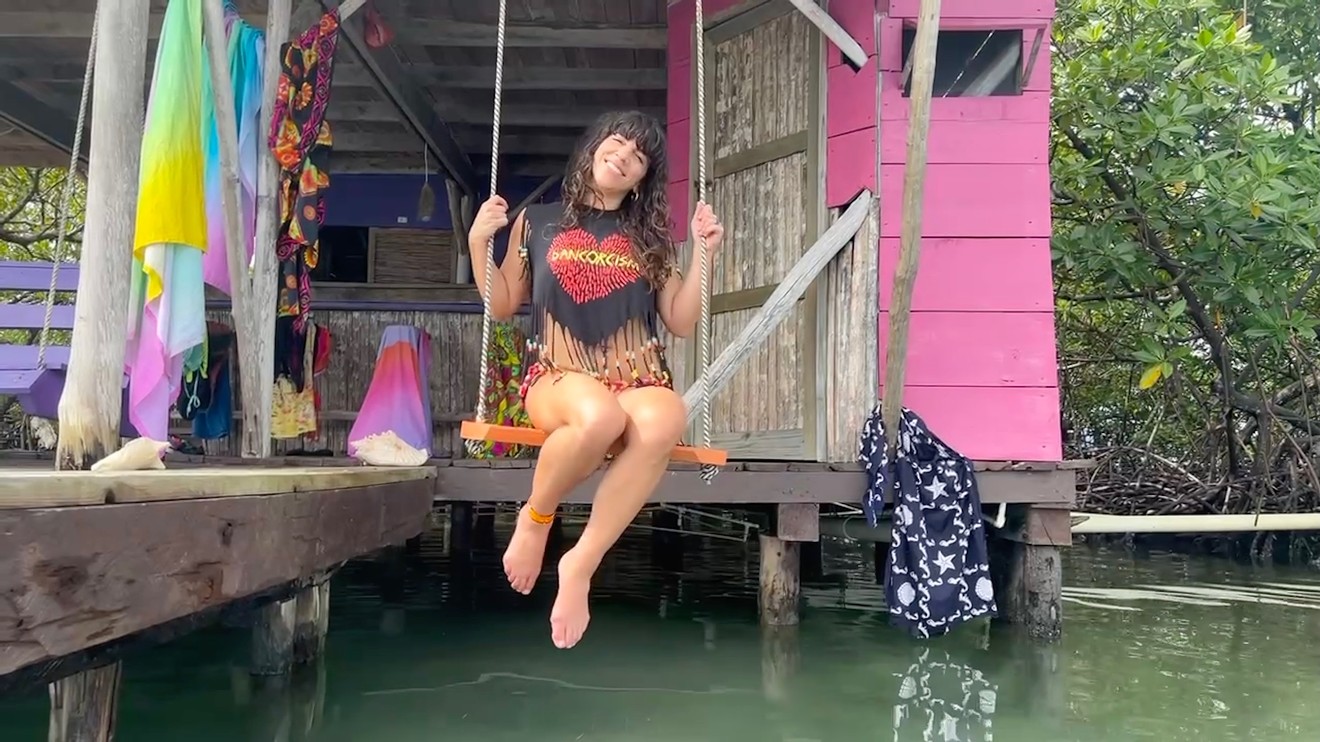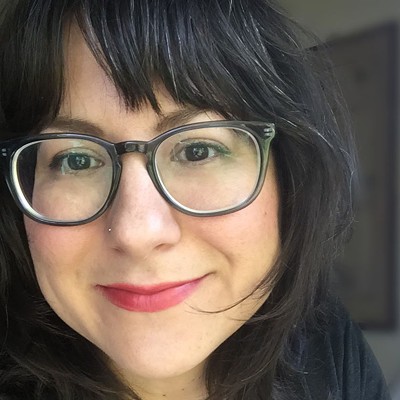Since then, Danctasy has been formalized into a class and renamed Dancorcism. A truly invigorating yet grounding movement experience that's based on the chakra system, it works to mend your soul while you're joyfully moving your body to songs like Prince's "Erotic City" and Brazilian Girls' "Good Time." Attias created an expansive community around her hybrid style of healing that includes retreats in remote oases, breathwork classes, tarot readings, and a Dancorcism Healer Teacher Training series that builds community and offers space for personal growth and a deeper dive into the healing arts.
Attias found fame straight out of college in New York City with the dance music duo Avenue D. She and her friend Daphne Gomez-Mena decided it would be funny to respond to a listing in the back of the Village Voice that read, "White female rappers wanted for major record deal." Their song at the audition was so raunchy that they were asked to leave.
But they developed their punk-rock-meets-booty-bass-influenced act — a mix that Attias says "really came out of growing up in the '90s in high school in Miami" — at a cabaret night at the hip BBar, where Attias was a bartender. Soon, Avenue D was plastered on billboards, featured in magazines, and touring the world.
After the act disbanded in 2007 and she completed a bike ride across the country to raise money for the World Wildlife Fund, Attias knew she wanted to go home to Miami but wasn't sure what was next for her. "You come down from this really big high," she says of that time. "It's uncomfortable; it's painful; it's confusing — weird. It was a really tough transitional couple of years."
While she didn't long for the nightlife scene, she says, "I still really missed losing myself completely to dance." So her friend Tina Theuermeister invited Attias to lead other friends in a dancing session in her backyard. She used the chakra work she was learning at a yoga training to inform the experience, as well as energy work she learned from friends of her mother, an acupuncturist. And there, in a lush Miami landscape, Attias' next endeavor took root.
When Danctasy members went out at night and heard a song from class, "We'd bust out dance mob-style because we all knew the choreography," she remembers. They were invited to hold classes in the cool outdoor enclave Upper East Side Garden and were soon performing at events like the annual '80s Prom at Vagabond, Calle Ocho, and she choreographed a group of "Climateers" for the King Mango Strut Parade.
When Attias returned to New York, she became attuned to reiki, began working as a practitioner at a healing center, Maha Rose, and wondered, "What if I make up my own version of dance therapy?"
She rebranded Danctasy as Dancorcism, which she committed to instructing weekly. "Sometimes the wellness stuff can take itself somewhat seriously, and the word Dancorcism lets you know already that it's kind of playful," she says. And it quickly drew a devoted following.
Kizzy Gonzalez was one of the early members of Attias' dance troupe. Over the years, she's attended classes religiously. "I have done Dancorcism on the beach, in a church, in a dance studio, and in a swanky hotel. Though what has been the most impactful was Dancorcism through Zoom in the dark days of the pandemic," she says. Gonzalez was recently able to attend a class in person. "It has been one of the most positive experiences I had this year. The feeling of being close to people's energy and connecting with others through dance leaves me with joy and lightness."
The classes are a structured amalgamation of Attias' background in the healing arts and nightlife and sort of bottles that fun you have with friends. Her choreography draws from the pizzazz and accessibility of '90s VHS workout tapes, like Denise Austin: Kickin' with Country, which she used to exercise with her roommates at the artist space Magic Land in Williamsburg, Brooklyn.
By 2013, Attias also began hosting retreats that she calls "a vacation for your spirit." She's hosted 31 so far, bringing her community together in majestic spots like a remote island in Panama and Joshua Tree, California. Attendees work together to manifest higher visions.
Miami-to-Brooklyn transplant Michelle Restrepo attended a retreat in Ocala National Forest. After trying to get pregnant for six months, she was feeling frustrated. "My purpose for the retreat was to envision, manifest, and make my' baby alligator' happen in the following year. I included this purpose in all our activities. Everyone else on the retreat also helped us to manifest during the group activities," she says.
She's now pregnant. The due date: Precisely one year, to the day, after the retreat.
In 2018, Dancorcism was shifting again and growing. Attias was working on a music album that would fit the specific formula of her classes. Dressed in extravagant costumes, she and her backup dancers had a massive audience at Opus art and music festival at Maryland's famed Merriweather Post Pavilion hand-in-hand and were moved to tears by the interactive event. She saw this kind of performance as the future of Dancorcism.
Then came COVID-19. During the lockdown, dozens of friends emailed her that they needed Dancorcism more than ever, so she took her community online. In 2020, 80 people were attending classes on Zoom from all around the world.
"Those Sunday Zoom classes during 2020 were a lifeline," Gonzalez says. "Dancorcism helped me not spiral. And if I did spiral, I knew that Dancorcism would help me cope and give me some relief until the next dance class."
The pandemic also gave Attias the time to launch a virtual Dancorcism Healer Teacher Training series, which brings Dancorcism to more people by training teachers — about 40 percent of attendees go on to teach. But the workshop is also for people who want to replenish their energy and enhance their own healing practices.
"It's about making internal shifts and transformations and reconnecting to your fullest essence," Attias says.
This week, she'll start the fourth "season" of teacher trainings.
And if you're wondering what it looks like to exorcise while you exercise? During the first teacher training in 2020, Attias recalls, "We were all on Zoom together, dancing on the dream plane, imagining the world we want to live in when we found out the election results."
And that kind of transformation is what Dancorcism is all about.
Sign up for virtual Dancorcism Healer Teacher Training through June 5, or purchase past Dancorcism classes online at funhealseverything.com.












